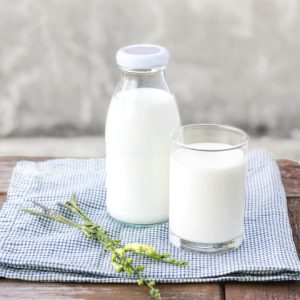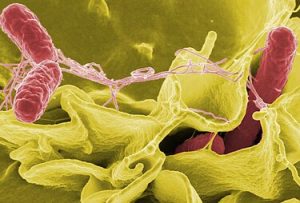Types of microorganisms in milk spoilage

- In milk, the microorganism that is principally involved in spoilage is psychotropic organisms.
- Psychotrophs are destroyed by pasteurization temperature,however, some like pseudomonas fluorescence, pseudomonas fragi can produce proteolytic and lipolytic extracellular enzymes which are heat stable and capable of causing spoilage.
- Some species and strains can survive pasteurization but grow at refrigeration temperature which causes spoilage like Bacillus, clostridium, Cornebacterium, Anthrobacter, Lactobacillus, Microbacterium, Salmonella, Listeria, E.coli, Pseudomonas, Campylobacter.

- Bacterial development in milk is primarily due to strains of Pseudomonas flourescens at temperatures of 2 – 4°C. Little development occurs at a temperature of less than 2°C.
- Spore establishing bacteria are able to occur in a highly reliable form called ‘spores’. In the spore state, these bacteria are prepared to withstand greater heights of acidity.
| Microorganisms Involved in Food Spoilage | |
| Microorganism | Cause of Spoilage |
| Salmonella | Salmonellae mostly occur in raw milk. Lack of pasteurization leads to this. |
| E. coli | This produce shigatoxin which might cause symptoms like diarrhea and stomach pain |
| Pseudomonas | Extracellular enzymes (mainly lipases and proteases) secreted by these organisms are known to cause spoilage of milk and dairy products |
| Clostridium | This might cause late gas blowing and off-flavor development |
| Listeria | Listeria monocytogenes might cause circling disease, encephalitis, meningitis, septicemia, and mastitis in dairy cattle. |
| Campylobacter | main causes of foodborne diarrheal diseases |
- Enzymes are biological catalysts which stimulate the rates of biochemical outcomes. Bacterial enzymes are largely significant to milk spoilage and cheese ripening temperature and desiccation.
- A number of foodborne illness has been reported from ingestion of raw milk or dairy product which is not properly pasteurized that leads to post-processing contamination.
- EX:-Bacillus cereus, Listeria monocytogenes, Yersinia enterocolitica, Salmonella spp.
1) Lactic acid bacteria(LAB) that ferment lactose to lactic acid and other end derivatives. LAB is significant in cheese making.
2) Proteolytic bacteria that contaminate protein and cause hostility and breakdown. Most crucial in cheese milk.
- Pseudomonas which is basically psychrotrophic and gives heat-stable lipases.
3) Lipolytic bacteria that reduce fats and generate lipolytic rancidity. Also, the most familiar example in milk is the genus Pseudomonas
4) The gas generating microorganisms that cause cheese openness, floating curd and gassy milk.
- Yeasts are constantly presents in milk and are common contaminants during the cheese-making process.
- Coliform bacteria are constantly present in milk but their amounts can be minimized by good sanitation.
- Propioni bacterium produces the desirable gas form in Swiss-type cheese.
- Some lactic cultures, called heterofermentative, also produce carbon dioxide.
5) Ropy bacteria cause stringy milk due to excretion of gummy polysaccharides. Mostly ropy bacteria such as Alcaligenes viscolactis are undesirable.
6) Sweet curdling bacteria develop rennet-like enzymes which may coagulate milk. Common examples are the psychrotrophic spore formers Bacillus subtilis and Bacillus cereus.
7) Numerous off flavours have been correlated with specific milk contaminates.
References
- https://www.uoguelph.ca/foodscience/book/export/html/1964
- https://www.sciencedirect.com/topics/agricultural-and-biological-sciences/clostridium-tyrobutyricum